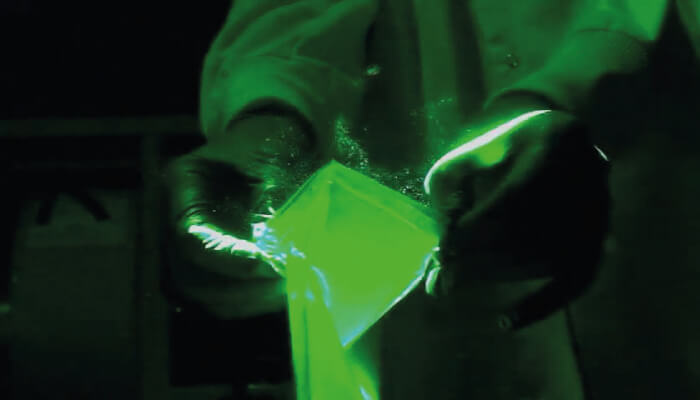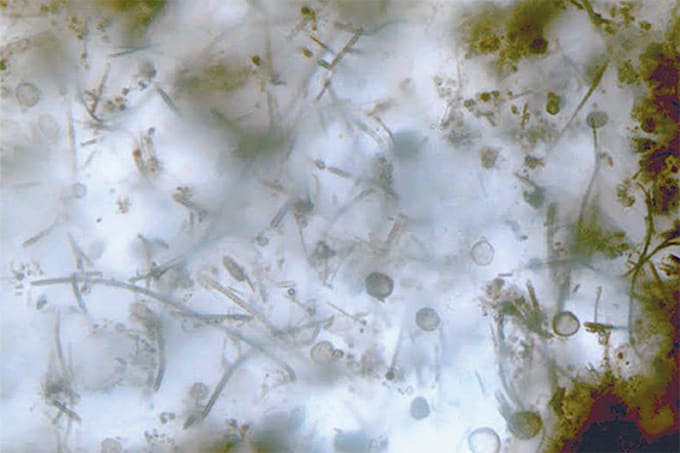A team of researchers led by Edward Sisco of the National Institute of Standards and Technology, found that their thermal desorption direct analysis in real-time MS (TD-DART-MS) method, coupled with wipe-based sampling, was capable of determining the contents of unopened drug packaging with 92 percent accuracy (1). We sat down with Sisco and co-investigators Elizabeth Robinson and Amber Burns to learn more.
What inspired the work?
Sisco: The study originated from our ongoing work measuring the background levels of drugs in forensic laboratories. Surfaces throughout the laboratory are wiped and the resulting sample is tested for a panel of drugs. This new study using wipes and TD-DART-MS to measure drug levels in packages is a natural extension of this work.

Burns: The goal is to develop a rapid screening test to provide the information necessary to further an investigation or file charges. It’s also possible that this approach will detect drugs that are difficult to analyze by other means.
How did you conduct the study?
Robinson: Wipe sampling was performed both on the outer and inner drug packaging prior to opening, and a wipe treated with a single drop of alcohol was used as a control. We then carried out TD-DART-MS and LC-MS/MS; the former was used for non-targeted screening of trace residues, allowing us to compare the substance inside the package with the trace residue on the outside, while LC-MS/MS was used to obtain quantitative measurements of the trace residue from the exterior of the packaging.
What were the major findings?
Sisco: We were able to correctly identify the contents of a package with 92 percent accuracy – much higher than anticipated – simply by wiping the packaging exterior. In most instances, there was more than a microgram of material present on the exterior – a significant amount in trace detection terms. It’s feasible that less sensitive techniques could also be employed, which represents an important consideration for field applications. Interestingly, as highlighted in the paper itself, we also detected low levels of illicit substances other than those contained within the sample packaging. Thus, it may be possible to profile the history of drugs present in a particular location – such as a drug dealers’ home – by targeting these low-level signatures.
What’s next?
Sisco: We’re working on a number of new avenues. Firstly, we want to increase the sample size while maintaining the same level of accuracy. We are also keen to expand the study to different types of packaging and are investigating whether it is possible to extract intelligence-level information – such as the source of an illicit substance – from samples.
In addition, we’re working on a novel workflow for traditional drug analysis that incorporates presumptive screening from the get-go. Our goal? To complete screening immediately upon receipt of evidence to better inform law enforcement, which should in turn drive more targeted forensic analysis in the field.
Lastly, we’re interested in whether the process of handling evidence contributes to trace residues. Given the background contamination in forensic laboratories, we want to ensure that residues on the outer packaging are not being introduced in the lab.
References
- E Sisco et al., “What’s in the bag? Analysis of exterior drug packaging by TD-DART-MS to predict the contents”, Forensic Sci Int [Epub ahead of print] (2019). DOI: 10.1016/j.forsciint.2019.109939




